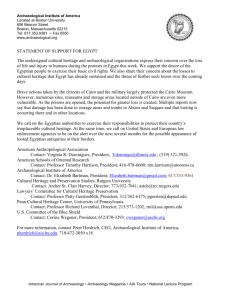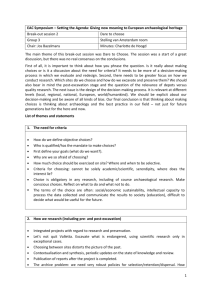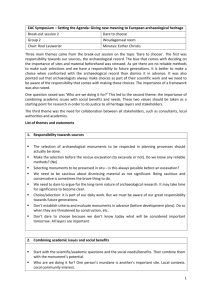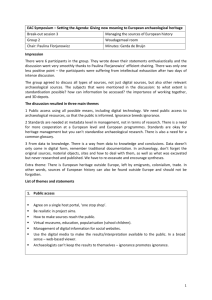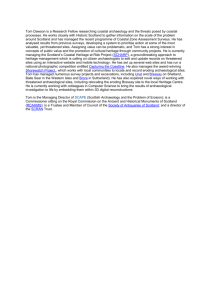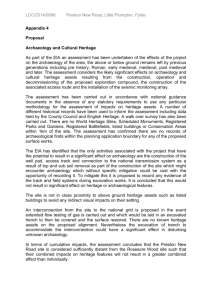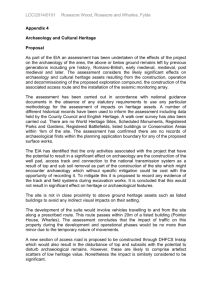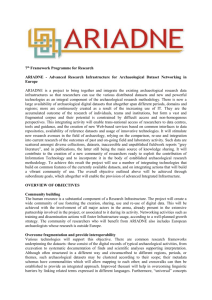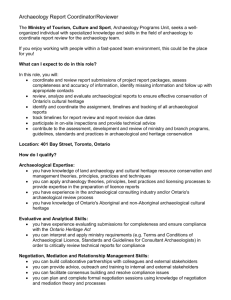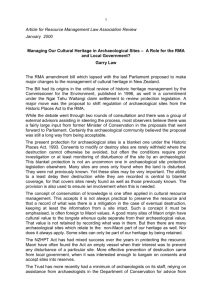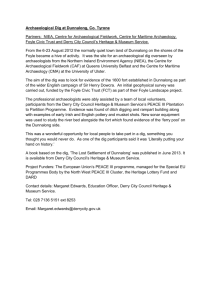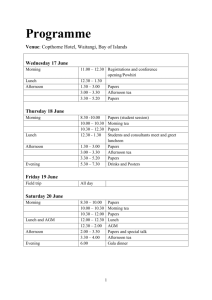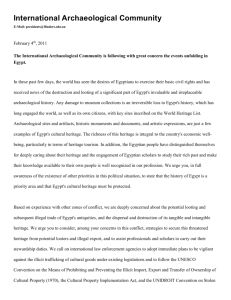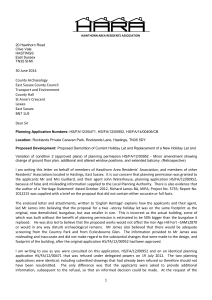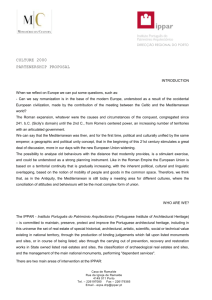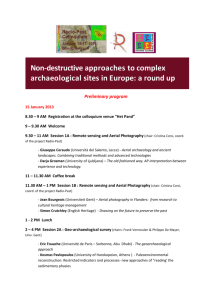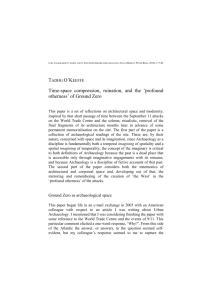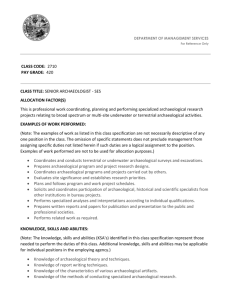Session 3
advertisement
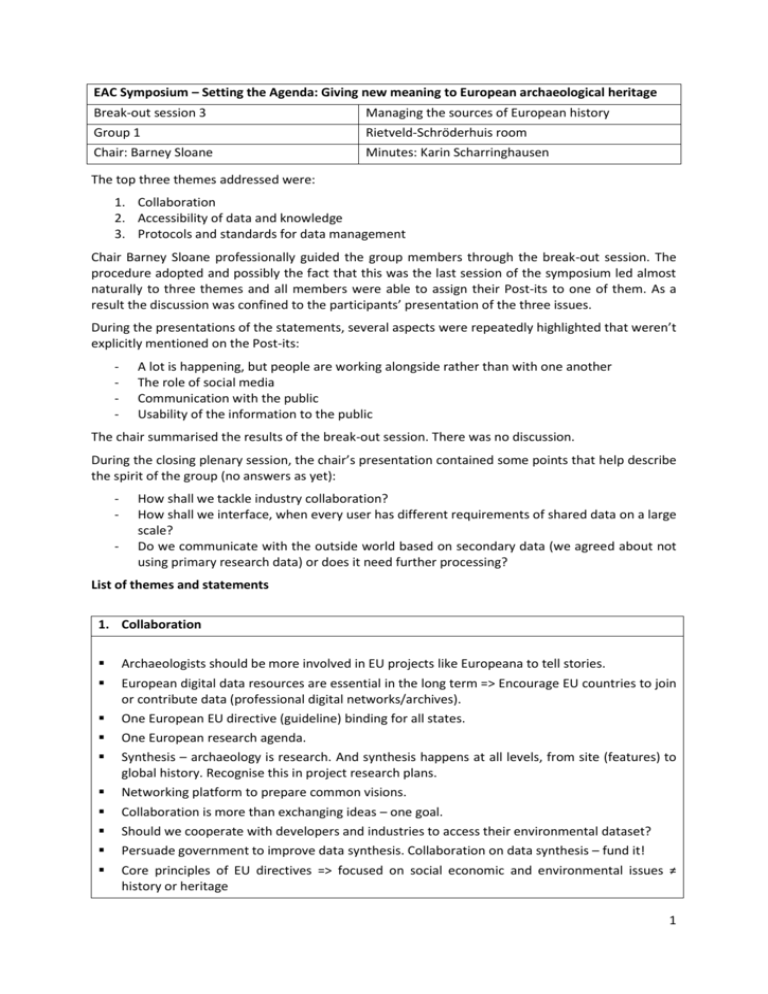
EAC Symposium – Setting the Agenda: Giving new meaning to European archaeological heritage Break-out session 3 Managing the sources of European history Group 1 Rietveld-Schröderhuis room Chair: Barney Sloane Minutes: Karin Scharringhausen The top three themes addressed were: 1. Collaboration 2. Accessibility of data and knowledge 3. Protocols and standards for data management Chair Barney Sloane professionally guided the group members through the break-out session. The procedure adopted and possibly the fact that this was the last session of the symposium led almost naturally to three themes and all members were able to assign their Post-its to one of them. As a result the discussion was confined to the participants’ presentation of the three issues. During the presentations of the statements, several aspects were repeatedly highlighted that weren’t explicitly mentioned on the Post-its: - A lot is happening, but people are working alongside rather than with one another The role of social media Communication with the public Usability of the information to the public The chair summarised the results of the break-out session. There was no discussion. During the closing plenary session, the chair’s presentation contained some points that help describe the spirit of the group (no answers as yet): - How shall we tackle industry collaboration? How shall we interface, when every user has different requirements of shared data on a large scale? Do we communicate with the outside world based on secondary data (we agreed about not using primary research data) or does it need further processing? List of themes and statements 1. Collaboration Archaeologists should be more involved in EU projects like Europeana to tell stories. European digital data resources are essential in the long term => Encourage EU countries to join or contribute data (professional digital networks/archives). One European EU directive (guideline) binding for all states. One European research agenda. Synthesis – archaeology is research. And synthesis happens at all levels, from site (features) to global history. Recognise this in project research plans. Networking platform to prepare common visions. Collaboration is more than exchanging ideas – one goal. Should we cooperate with developers and industries to access their environmental dataset? Persuade government to improve data synthesis. Collaboration on data synthesis – fund it! Core principles of EU directives => focused on social economic and environmental issues ≠ history or heritage 1 Justification/reason for doing the work that we do – value for money – this data is the atomistic unit demonstrating the value of expenditures on collections? 2. Accessibility of data and knowledge One benchmarking of (archaeological) heritage management . - Legislation - Organisation Make archaeological heritage visible for society. Bring it closer with easy-to-use technical tools (also at landscape level). Data relating to archaeological heritage management should also be visible for academics and society. Work with emerging data technologies to understand new ways of gleaning knowledge from massive datasets. Harvest of Valetta: finding out what's missing in Valetta => filling the gaps (accessibility). Storage conditions for material/finds => curation/conservation of material enables/disables the information and their re-use to produce knowledge. Interoperability between material data and digital data. Producing information/data – concentrate more effort on enabling archaeologists to produce information. A resource to make other forums of information dissemination. We need free access to state-funded or EU-funded datasets (maps of all kinds, LiDAR etc.). Invest in social media to raise public awareness and support – find out what is missing in Valetta, bring it up to date. Concentrate on archaeology and on only one type of resource – archaeological data from excavations. Data doesn’t belong to the producer. It should be made available as quickly as possible. Make emerging data-mining technology work for archaeology to help access grey literature. e.g. we can increase our knowledge by using intelligent crawlers (searching for indicators, not words). What’s out there now? List our sources/datasets. - Grey literature (excavation reports, etc.) - C14 dates, dendro dating, etc. - Cultural heritage assessments - Environmental samples - Books 3. Protocols and standards for data We need meta-databases and integration of new data into existing systems. Integrated datasets. Definition of sources: - Digital sources – data - Human resources – interpretation 2 - Meaning: don’t forget the person Solve the language confusion (e.g. bell beaker, klokbeker, glockenbechor, campiforme, etc.) by digital means. Create digital data platforms or networks: - Collaboration between ≠ experts - Not only interoperability - Standardisation - Uniformity - What kind of information, because if we don't give feedback to society it is harder to manage and protect To be made usable for society, archaeological data needs minimum processing. Sharing data on a large scale requires reflection on the type and level of data. e.g. ARIADNE – work to ensure that datasets are integrated – new datasets planned with this in mind. How will the system work? Keep it simple => user-friendly and achievable. What will the output be? - Credible - Reliable - Authentic - Honest 3 4

